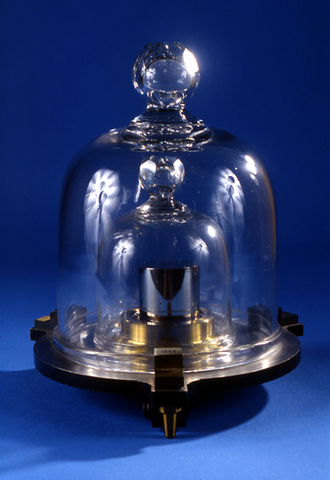We achieve our goals through precision measurements of various fundamental constants — for example, realization of resistance and voltage through the quantum Hall effect and Josephson effect respectively, and through our determination of the best values of the fundamental constants done under the auspices of the Task Group on Fundamental Constants of the Committee on Data for Science and Technology (CODATA, an interdisciplinary unit of the Scientific Committee of the International Council for Science).
The division was heavily engaged in the redefinition of the SI that occurred in 2019. We supported that effort through R&D and through interactions with the International Bureau of Weights and Measures (BIPM) and its consultative committees including the Consultative Committee for Units (CCU), the Consultative Committee for Electricity and Magnetism (CCEM), and the Consultative Committee for Mass and Related Quantities (CCM).
As part of this effort, NIST constructed a new Watt Balance which — prior to the redefinition — was used to make one final precision measurement of the Planck constant. After the redefinition, it became the means for the realization of the kilogram in the United States.
The redefinition of the SI achieved the goal of turning it into a system based on fundamental constants and properties of nature. In fact, the redefined SI is largely based on quantum mechanics and its generalizations. including quantum electrodynamics.
As such, the strategy of the QMD is to:
- investigate and exploit quantum behavior to create measurement tools and capabilities at and beyond the standard quantum limit
- explore the basic capabilities of complex quantum systems to better understand what future quantum technologies will allow us to measure, compute, and simulate
- exploit this knowledge to create the foundation to realize and disseminate mass, force, and electrical quantities and improve our ability to realize these quantities
- disseminate these quantities from first principles, through specially developed instruments and methodologies, or through scaling that minimizes the loss of accuracy of the various technologies involved relative to the best available quantum or classical technology
- to create critically evaluated data relevant to both fundamental constants and atomic properties
Redefining the Kilogram

For more than a century, the kilogram (kg) — the fundamental unit of mass in the International System of Units (SI) — was defined as exactly equal to the mass of a small polished cylinder, cast in 1879 of platinum and iridium.
Kept in a triple-locked vault on the outskirts of Paris, the platinum-iridium cylinder was officially called the International Prototype of the Kilogram (IPK). It even had a nickname: Le Grand K (The Big K). The accuracy of every measurement of mass or weight worldwide, whether in pounds and ounces or milligrams and metric tons, depended on how closely the reference masses used in those measurements could be linked to the mass of the IPK.
That situation has changed radically. In November 2018, the international scientific community voted to redefine the kilogram, freeing it from its embodiment in one golf-ball-sized artifact, and basing it instead on a constant of nature. That transformation was as profound as any in the history of measurement. MORE
News and Updates
Projects and Programs
Software
Tools and Instruments
Awards
Press Coverage
Patents
Contacts
Deputy Division Chief
-
(301) 975-6572












